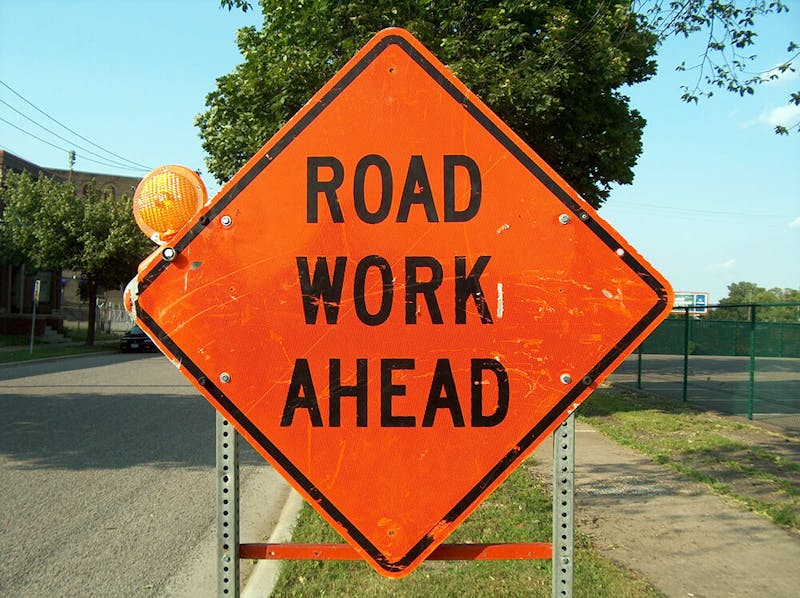
As major roadways are repaired throughout our state, it’s a good idea to be aware of the potential dangers presented by the addition of work zones on our highways and interstate. A car accident can happen for a number of reasons, but there are some unique causes associated with those that happen in construction zones. In order to understand those factors, you first have to understand how most work zones are set up and arranged.
Work Zone Components
When a work zone is set up properly, according to the Federal Highway Administration, there are four different areas you’ll travel through. Each serves a purpose to keep workers safe and get drivers to where they’re going. Having an understanding of the areas you’ll be driving through can give you a better idea of how to safely travel forward and make it through the work zone without incident.
- Advance Warning Area. The advance warning area tells traffic what to expect ahead and often reduces the speed limit. Typically you’ll see signs or signals indicating a lane merger or construction zone within so many miles or feet. These signs will likely continue until you get to the transition area.
- Transition Area. The transition area moves traffic out of its normal path. There are often cones that shift the lanes of the traffic, whether two lanes are merging into one, or lanes are shifting to utilize the sides of the road.
- Activity Area. The activity area is where the construction or maintenance work takes place. Within the activity area is the work space, traffic space, and lateral and longitudinal buffer spaces. The work space is set aside for workers, equipment, and material storage. The traffic space is where vehicles pass through. The lateral and longitudinal buffer spaces provide protection for traffic and workers.
- Termination Area. The termination area lets traffic gradually resume normal operations. The longitudinal buffer space tapers off until traffic patterns return to normal.
Understanding a Typical Work Zone Crash in Arkansas
While every accident occurs under unique circumstances, there are identifiable patterns for each work zone crash that happens in Arkansas. These patterns are similar for highway construction zone crashes all over the country.
The average driver involved in a work zone crash is a male between the ages of 35-44. Accidents are most likely to occur on Saturdays in June between the hours of 10:00 a.m. to 4:00 p.m. While this may come as a surprise, more accidents happen in the daylight, with a dry road and no adverse weather conditions. Large trucks are more likely to be involved in work zone crashes than traditional passenger vehicles, with the majority of wrecks being head-on collisions during which the driver was following the road.
In regard to road conditions, it’s more likely for these collisions to take place on two-lane highways in rural areas, with speed limits between 51-60. If the driver is at fault for the crash, it’s more likely than not that they were distracted at the time the accident happened.
Contributing Factors in Highway Work Zone Accidents
Being aware of the unique causes of highway work zone accidents can help you avoid a potential crash while driving through construction. The factors that contribute to a significant number of work zone crashes include the following:
- Heavy Equipment. The heavy, earth-moving equipment you’ve seen on the side of the road has probably included dump trucks, bulldozers, backhoes, excavators, and more. This equipment is dangerous if the operator isn’t properly trained. The machinery could backover another car of crush a person if used incorrectly.
- Blind Spots. Along with the large pieces of machinery comes additional blind spots. While all vehicles have blind spots, heavy equipment can create additional blind spots that impact what a driver or equipment operator can see.
- Construction Company Negligence. When a construction company takes on road repair, they are responsible for setting up the work zone, ensuring the flow of traffic will be safe, and making sure their workers use equipment properly. If corners are cut to save time or money, a crash can easily happen.
- Interchanges/Merging Lanes. When traffic picks up at an interchange or cars are attempting to merge to enter or leave a highway, there’s an increased risk for an accident. When you add a work zone into the mix, the risk is even higher, especially if road signs are clear.
- Poor Road Conditions. If a construction crew is repaving a road, one side might be pulled up first. As a result, drivers may have to maneuver their vehicles on uneven or rough roadways. There’s also the issue of narrowed lanes, especially when tractor-trailers are involved.
If you’ve been injured in a highway work zone accident, you’re not alone. Our attorneys are prepared to help you take legal action against the negligent party that caused your accident, so you can recover your accident-related losses. To learn more, contact us today.

